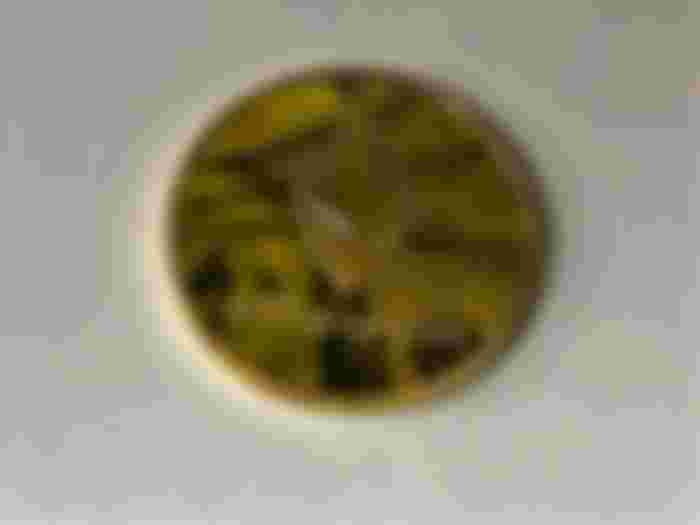Ethereum is an open-source disseminated blockchain network that streamlines shrewd agreement scripting. Critically, the stage permits engineers to smooth out form decentralized applications that work on blockchains. Subsequently, the stage has acquainted the world with host of new functionalities and applications.
It's almost difficult to wander into the crypto market without finding out about Ethereum. This special token reformed the cryptospace. Accordingly, ETH reliably positions as the second most famous digital money dependent on market cap. Quite, a mix of components has prompted the ubiquity of ETH in the crypto space
Dapps are cutting edge programs planned explicitly to work inside decentralized organizations. These organizations can incorporate Tor, Distributed Ledgers, and blockchain. Dapps give the world a large group of new chances. Thusly, Dapps keep on being one of the quickest developing zones inside the blockchain area.

How Does Ethereum (ETH) Work?
Ethereum obtains some critical highlights from Bitcoin, but with slight changes, for example, the PoW agreement component. Likewise, Ethereum uses a portion of the techniques utilized by BitTorrent to make a really decentralized working framework for Dapp developers to expand upon.
Ethereum is regularly alluded to as a cryptographic money. This reference is erroneous. Ethereum is the stage that the digital money Ether works inside. Inside this environment, Ether's essential job is to remunerate excavators for performing EVM calculations.
EVM – the Ethereum Virtual Machine
EVMs are virtual stacks inserted inside each full Ethereum hub. EVMs improve the way toward building decentralized applications. Subsequently, these conventions are basic to Ethereum's presentation since they execute contract bytecode.
Urgently, every hub in the Ethereum network runs an EVM example. This methodology permits them to concede to executing similar guidelines without human mediation. Furthermore, it gives a methods with respect to where anybody can execute code in a trustless environment.
Critically, EVM bytecode is a turing complete framework. Turing alludes to the abilities of the conventions. Turing complete conventions, for example, JavaScript can play out an enormous assortment of basic computational capacities.
Various Languages
One of the most novel and incredible parts of EVM is its capacity to use numerous coding dialects. Until now, EVMs have been effectively conveyed utilizing C++, Java, JavaScript, Python, Ruby, and the sky is the limit from there. Strangely, Ethereum even presented its own item situated, significant level language for executing shrewd agreements called Solidity. Engineers can program utilizing any of the more significant level dialects recorded above and the code is then changed over down into EVM Bytecode.

What is GAS?
You may have heard the term Gas tossed around when individuals examine Ethereum. Gas is an inner estimating expense instrument that permits Ethereum to guarantee the nature of their organization's coding. Each Ethereum network exchange can be estimated regarding its Gas use. Along these lines, each EVM has a specific Gas Limit and Gas Price related with its execution.
Acutely, the presentation of Gas into the organization guarantees the nature of code on the organization stays high. This system assists with shielding the hubs from the presentation of odious coding. It likewise keeps the organization from getting invaded with disappointing coding.

Setting Gas Prices
As far as possible is the measure of complete computational force the Ethereum organization will utilize. The more drawn out and more unpredictable your savvy contracts are, the higher your complete gas breaking point will turn into. The Gas cost is the sum a client is happy to cover to execute the capacity. In the event that you set your gas cost excessively low, diggers will simply overlook your solicitation. Likewise, if your gas cost doesn't completely cover your EVM, excavators will keep the distinction.
The blend of both these variables gives you the expense of your Ethereum exchange. Significantly, the usefulness and preparing charges get estimated in gas, yet the expense is paid in Ether. This procedure is intriguing in light of the fact that it permits the organization to decide the costs itself. Thusly, Ethereum capacities in a decentralized way over its inward business measures.
History of Ethereum (ETH)
Ethereum's set of experiences starts in the beginning of the crypto market. In 2013, an instinctive developer and long time Bitcoiner, Vitalik Buterin distributed a whitepaper that portrays the specialized plan and abilities of the Ethereum idea. In the paper, Buterin depicts a decentralized, worldwide PC that could run on a blockchain like Bitcoin
By 2014, Buterin had finished the absolute first form of Ethereum. Critically, he had some assistance from the Swiss improvement firm GmbH. This early form of the product advanced an ICO for the venture. The ETH ICO was a colossal achievement. The venture raised $18 million from an assortment of financial specialists. Principally, it made the main organization of ETH diggers and investors.
Ethereum Launches Beta
In 2015, Buterin delivered the primary beta adaptation of Ethereum. The convention got the name Frontier. The delivery helped push the estimation of Ethereum up to $0.420897 by Oct 21, 2015. In 2016, the convention got another significant update named – Homestead. It was right now that the idea of decentralized self-governing associations (DAOs) first became public information too.
DAOs Enter the Market
DAOs take the functionalities of organizations and convert all perspectives into shrewd agreements. You can think about a DAO as an association made by designers to robotize choices and encourage digital currency exchanges. The objective of these cutting edge conventions was to systematize the guidelines and dynamic cycles of an association. Along these lines, you could kill the requirement for records and individuals in overseeing.
Ethereum's first DAO dispatched authoritatively on April 30, 2016. The dispatch of the DAO helped Ethereum secure $150 million by means of a public ICO. At that point, the DAO was the biggest blockchain-based crowdfunding occasion ever. In particular, the occasion made sure about over $150 million. Maybe much more great, the occasion saw support from more than 11,000 speculators found everywhere on the globe.
DOA Hack
Lamentably, the promotion was fleeting. Programmers immediately found and misused a significant programming mistake and assault vectors with the DAO. Unfortunately, engineers were at that point attempting to fix the bugs yet didn't finish their work preceding the assault. To top it all off, 15% of all ETH was held in the DOA around then.
The programmers used a copied DOA framework to deplete the assets. It just took programmers until June eighteenth to guide out 3.6 million ETH from the ICO. Information on the assault dropped the estimation of ETH from $20 to just shy of $13.
Designers saw the assets depleting, however came up short on an opportunity to acquire enough votes to renounce the heist. Also, since the DOA raised definitely a bigger number of assets than ETH expected, they had fumbled the degree of security required. It was later uncovered that the engineers kept all the subsidizing in a solitary wallet address.

Recovering Control
In the end, ETH designers acknowledged precisely what was going on and they started to work hotly to stop the assault. As the ETH kept on depleting, designers started to think about a more stunning way to deal with halting the programmer.
How Ethereum Was hacked
Critically, the programmer used a copy DOA to trick the framework. Since it was a copy, it incorporated the primary conventions at first customized into the first. One of these conventions was a 28-day withdrawal specification. Fundamentally, the programmer couldn't access their assets for nearly 30 days. This window gave Ethereum some an ideal opportunity to attempt to spare the assets.
During the meetings to generate new ideas, numerous recommendations were brought to the table. In the end, engineers concluded that they expected to some way or another invalidate the Ether in the programmer's DOA. From the start, a delicate fork was proposed as a way to achieve this errand.
Delicate Fork versus Hard Fork
In the digital money domain, there are two sorts of significant programming refreshes blockchains can get. A delicate fork is a significant redesign that permits excavators to keep mining the equivalent blockchain. Contrarily, a hard fork upholds new conventions that expect excavators to update their product before they can mine another chain of exchanges. Basically, a hard fork makes another cryptographic money.
What Caused a Hard Fork?
Buterin's group needed to propose new programming conventions that would make it inconceivable for the programmer to eliminate the taken ETH from their DOA. In a public assertion, Buterin expressed that he wasn't proposing to change any squares.
All things being equal, he said he needed to present a component in the essential coding of Ethereum to keep the programmer from pulling out the ETH. The switch would be a delicate fork that could permit ETH engineers to present a boycott for specific locations.
Programmer Responds
Here is the place where the episode gets significantly crazier. In the wake of seeing Buterin's post, the programmer reacted with a post to the organization. He clarified that he had done nothing incorrectly and that in a DOA, it's dependent upon the keen agreement to approve exchanges. He contended that nothing outside of the conventions ought to have the option to change their choice.
In one angle, the programmer had an admirable sentiment. The whole reason of the DOA was that it required no human mediation. Furthermore, one of the center highlights of any blockchain is its alleged changelessness and inalterability. The programmer even proceeded to offer excavators who didn't update conventions tremendous prizes. In particular, the aggressor offered 1 Million ETH and 100 BTC to every hub that rejected the update.
Hard Fork Proposal
Anticipating that the programmer had the high ground in the situation, ETH engineers started to investigate more forceful alternatives. At last, a gathering inside the ETH people group suggested a hard fork. The hard fork would move back all ETH exchanges to seconds before the assault happened.
The ETH Community Splits
This proposition was met with ardent resistance. The whole purpose of a blockchain is to encourage unalterable and unchanging exchanges. The way that Ethereum's engineers needed to move back the blockchain exchanges to dodge misfortunes went straightforwardly d espite the counter control qualities of a blockchain
It was contended that ETH worked precisely as it was proposed and that the update was not required. Or maybe the DOA was modified inaccurately and the misfortunes were the aftereffect of that. The hard fork would present alters made by a brought together overseeing authority inside the ETH biological system.
Choice is Made
Eventually, another rendition of the Ethereum mainnet entered the market on July 20, 2016. At last, the hard fork organized a sporadic state change that deleted the DAO robbery. The hard fork split the Ethereum blockchain. The first chain of exchanges would now pass by the name Ethereum exemplary, while the new crypto would embrace the Ethereum title.
Long haul Effects
The choice to proceed with the hard fork would have resonations all through the crypto market. In the end, it would prompt ETH-based stages being evaded inside the security token space. The purpose behind these activities is straightforward, major monetary establishments can't hazard having protections exchanges switched. Notwithstanding, ETH still remaining parts the top stage for Dapp advancement today.
Regardless of the downsides, ETH figured out how to recover market certainty following the assault. By 2017, the estimation of Ether became over 15,000% to arrive at an untouched high of $1,432.8 in January 2018. Today, it's as yet the second digital currency as far as market cap, even with more rivalry than any time in recent memory.
ERC Protocols
First experience with the cryptospace was significant. It acquainted the world with a more disentangled cycle for the production of keen agreements. Presently anybody could make a working and safe digital money on the ETH network utilizing ERC conventions.
ERC conventions are token norms that cling to Ethereum's blockchain prerequisites. Initially, Ethereum intended to use the ERC-20 convention to disentangle inside symbolic creation. Nonetheless, it wasn't well before they understood that there was an enormous interest for a shortsighted symbolic creation strategy.
This procedure helped push the crypto area higher than ever. In particular, the 2017 ICO breakout can be to a great extent credited to the development of the Ethereum blockchain and ERC tokens. Today, ERC tokens are by a wide margin the most utilized in the space. One investigation found that as of April 16, 2019, there were in excess of 181,000 ERC-20-viable tokens that lived on the Ethereum principle organization.
The most effective method to Buy Ethereum (ETH)
Putting resources into Ethereum is simple these days. Each significant trade exchanges ETH as one of its primary coins. Truth be told, you would now be able to locate an enormous assortment of ETH exchanging sets on most trades. To begin your interest in Ethereum, you need to make a beeline for a safe and legitimate trade, for example, Binance, KuCoin, Poloniex, or Bittrex.
When you show up at your preferred trading, round out the entirety of the fundamental enlistment steps. Since you approach your record there are different approaches to buy ETH.
Initially, you can purchase ETH legitimately utilizing fiat money, for example, USD or EUR. This system can take longer and cost more than trading digital money for Ethereum. Nonetheless, it is probably the most ideal approaches to enter the crypto market.
The subsequent method to gain ETH is by exchanging some other cryptographic money for it. It would be troublesome today to discover a trade that wouldn't joyfully exchange ETH for almost any token available. This market entrance permits financial specialists to openly pick between stages dependent on their benefits instead of in the event that they offer the symbolic you want.

Mining Ethereum (ETH)
The Ethereum blockchain uses a PoW framework to guarantee the condition of the organization. Organization members, known as hubs or diggers, ceaselessly approve the organization. In like manner, each hub endeavors to fathom a complex numerical condition to demonstrate they attempted to make sure about the organization.
Much the same as Bitcoin, the more excavators on the organization, the more troublesome it becomes to take an interest. The hub that adds the following square to the organization gets a prize proportionate to the measure of computational force they added to the organization.
In contrast to Bitcoin, which approves new squares of exchanges like clockwork, Ethereum approves obstructs at regular intervals. Likewise, the digger who makes the most recent square gets 3 ETH as a prize for their endeavors. This is the main time that new Ethereum enters the crypto market.
Confirmation of-Stake Ethereum
Curiously, Ethereum plans to change over its organization from a PoW agreement system over to a Proof-of-Stake (PoS) component before the finish of 2020. Verification of-Stake networks use substantially less power than PoW organizations. These electrical investment funds is cultivated through the end of the PoW numerical condition.
All things considered, PoS frameworks depend on a marking system. At the point when you "stake" your coins you are holding them in an organization wallet. The more tokens you stake, the more probable it is that you will be the following hub to endorse the square of exchanges. In a PoS framework, a programmer would need to buy an immense measure of tokens to deal with the organization.
Eventually, the programmer would lose the most. Thusly, PoS frameworks can keep their organizations legitimate without requiring the extra processing intensity of a PoW framework. Numerous investigators consider PoS frameworks as the characteristic advancement of the space.
Ethereum – A Pillar in the Market
As Ethereum chooses what moves up to make later on, it's imperative to perceive the solid situating of this stage inside the area. It's difficult to envision a crypto market without Ethereum. Consistently, Ethereum satisfies its objectives as a safe Dapp dispatching stage. It's not possible for anyone to state without a doubt which digital currencies will stand the trial of time, in any case, on the off chance that you needed to pick two, Bitcoin and Ethereum would cle arly win the prize





All you need to know....buy and hold 😊 Just kidding!